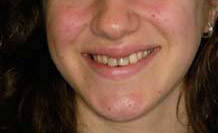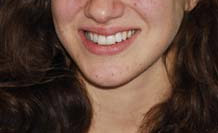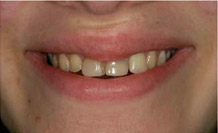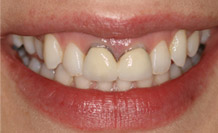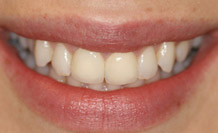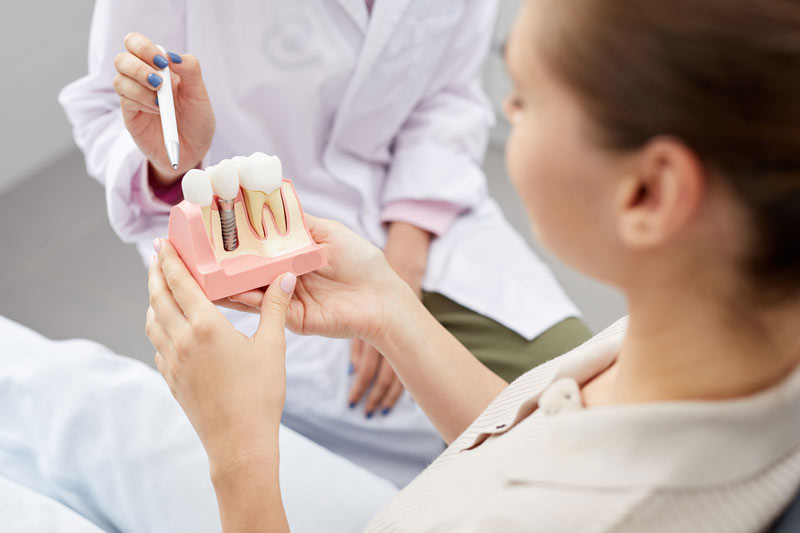At your second visit the tooth to be crowned will be prepared. This occurs according to specifications required to provide a premier functional and aesthetic outcome. An impression will be taken of the tooth and sent to our ceramist along with your custom prescription. A temporary crown will be constructed, to provide you with an aesthetic, functional and protective provisional restoration. In the mean while our ceramist will follow your custom prescription to hand craft your crown.
The preparation procedure usually is a single visit of 60 minutes, however this maybe longer or involve multiple visits depending on extent, complexity and number of crowns.
At your final visit the provisional crown is carefully removed and your custom made crown tried in. You will be shown the crown at this try in stage. Once you confirm that you are pleased with the appearance and fit, your dentist will cement the crown to your tooth.
We expect our crowns to last for over 15 years and we provide a 2 year guarantee against crown breakage.
It is generally accepted that between 1 in 5 and 1 in 8 teeth that have been crowned or have deep fillings in them go on to become non-vital and require a root canal treatment at some stage and this can be many many years after the initial crown.
For those patients that suffer from dental anxiety, we offer Conscious IV Sedation to help you feel more relaxed during treatment.
Recall and Review
It may take a couple of days for you to become accustomed to your new crown. However, you will be invited to return a few weeks after the provision of your crown to review your oral health status, condition of crown and feed back of the cosmetic result. It is important to employ a strict oral hygiene regime encompassing professional hygiene intervention, as a crowned tooth is not protected from decay or gum disease. You will be shown the most appropriate method to ensure optimal oral health. As with any treatment regular recall and review is essential to ensure optimal status of your crown.
Types of Dental Crown
Various types of crowns are offered at Smile Cliniq, and their cost depends on the material of choice, time taken, complexity of work and laboratory used.
Gradia
White, resin based material which chemically bonds to tooth enamel, thus less drilling is required, but is not as strong as all ceramic or metal crowns.
The GC GRADIA family is a unique light-cured composite system for indirect restorations such as crowns, bridges, inlays and veneers and all types of direct restorations whether it’s in the anterior or the posterior region.
All porcelain
(Emax is our preferred indirect restoration) – White and incredibly aesthetic, often indistinguishable from natural teeth. Even stronger than Gradia and is also capable of chemically bonding to the tooth. Produces a very natural result.
EMAX
Ivoclar Vivadent’s patented lithium disilicate material is truly a revolution for the dental industry. Never before has a material been able to combine high strength, high aesthetics and ease of use into one product, until now.
IPS e.max is a lithium disilicate glass ceramic that has optimized translucency, durability and strength for full anatomical restorations. Due to the use of new technologies and optimized processing parameters, IPS e.max lithium disilicate has evolved beyond previously available lithium disilicate ceramics. Indeed, compared to other glass-ceramics, e.max demonstrates a strength that is 2.5 to 3 times higher. IPS e.max lithium disilicate restorations exhibit superior durability featuring 360-400 MPa of flexural strength. When fabricated to full-contour, the monolithic structure is the most robust ceramic system tested to date. The opalescence, translucency and light diffusion properties of IPS e.max lithium disilicate were all designed to replicate natural tooth structure for beauty and undetectable restorations.
Zirconia
Zirconia is the strongest crown material on the market today. The Zirconia material typically used by most manufacturers is atetragonal polycrystalline zirconia, partially stabilized with yttrium oxide. Zirconia materials typically have strengths of over 900 MPa.
Porcelain Bonded to Metal
White porcelain bonded to a metal sub-structure. The metal gives strength whilst the porcelain gives the white colour. Not as natural looking as emax and gradia crowns. The metal substructure may be non – precious or precious metal depending on the patient’s choice. Precious metal is generally preferable as it is more biocompatible with the gingivae (gums) leading to less inflammation and is less prone to corrosion. The weak point here is the bond between the porcelain and metal, and over time the porcelain may break away from the metal. Also, as gums recede with age, a black line may be seen above the crown and this leads to an unsightly smile. This blackness is the metal in the crown. This does not occur with all porcelain/ceramic crowns.
Gold
Metal crown. Very strong and durable. Has been a successful restoration for many decades. Has the most similar wear characteristics to natural tooth enamel and therefore is very effective on back teeth, especially in people who grind their teeth. The nature of gold as a material also allows minimal tooth preparation (as it can be formed in thicknesses of less than 1mm), thus preserving more tooth structure.
